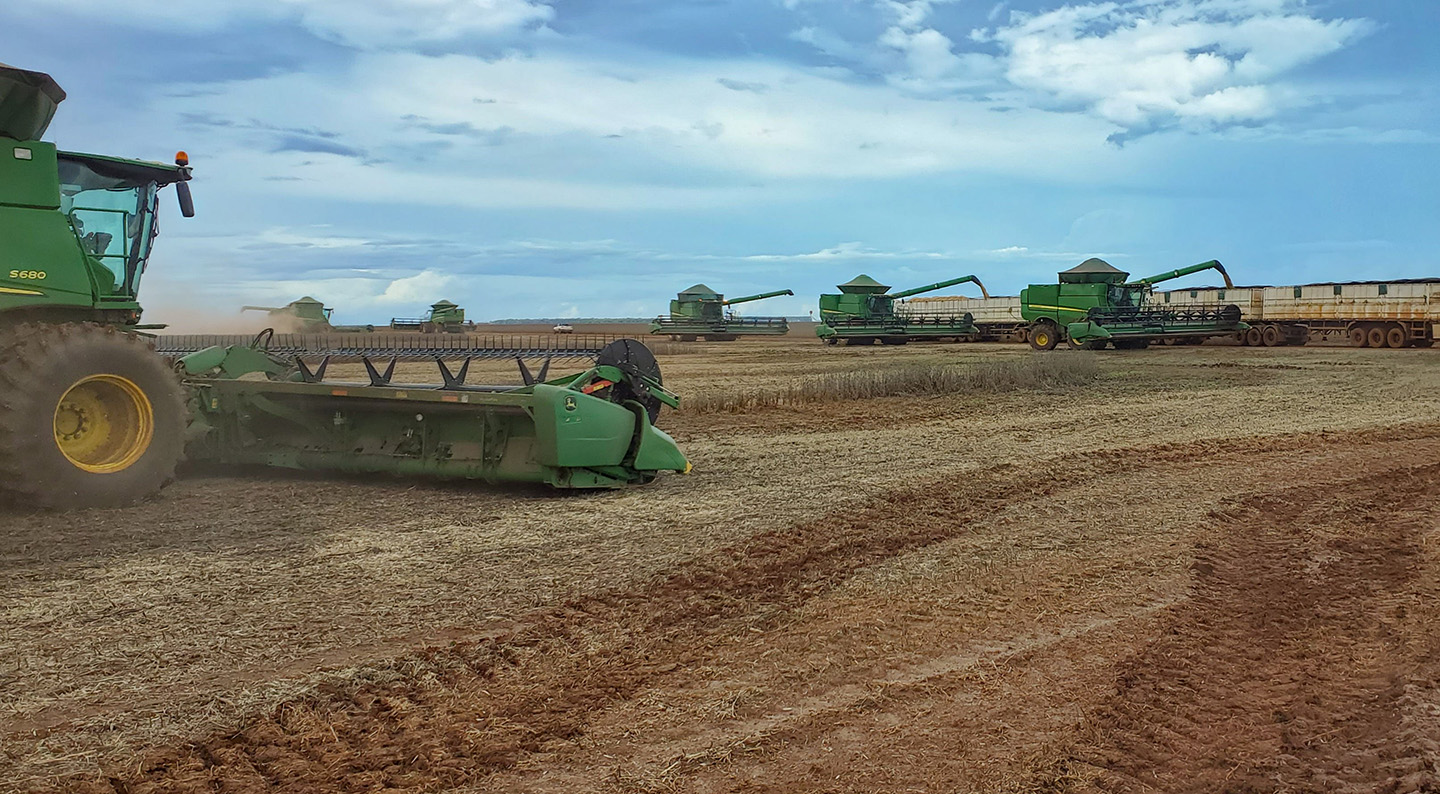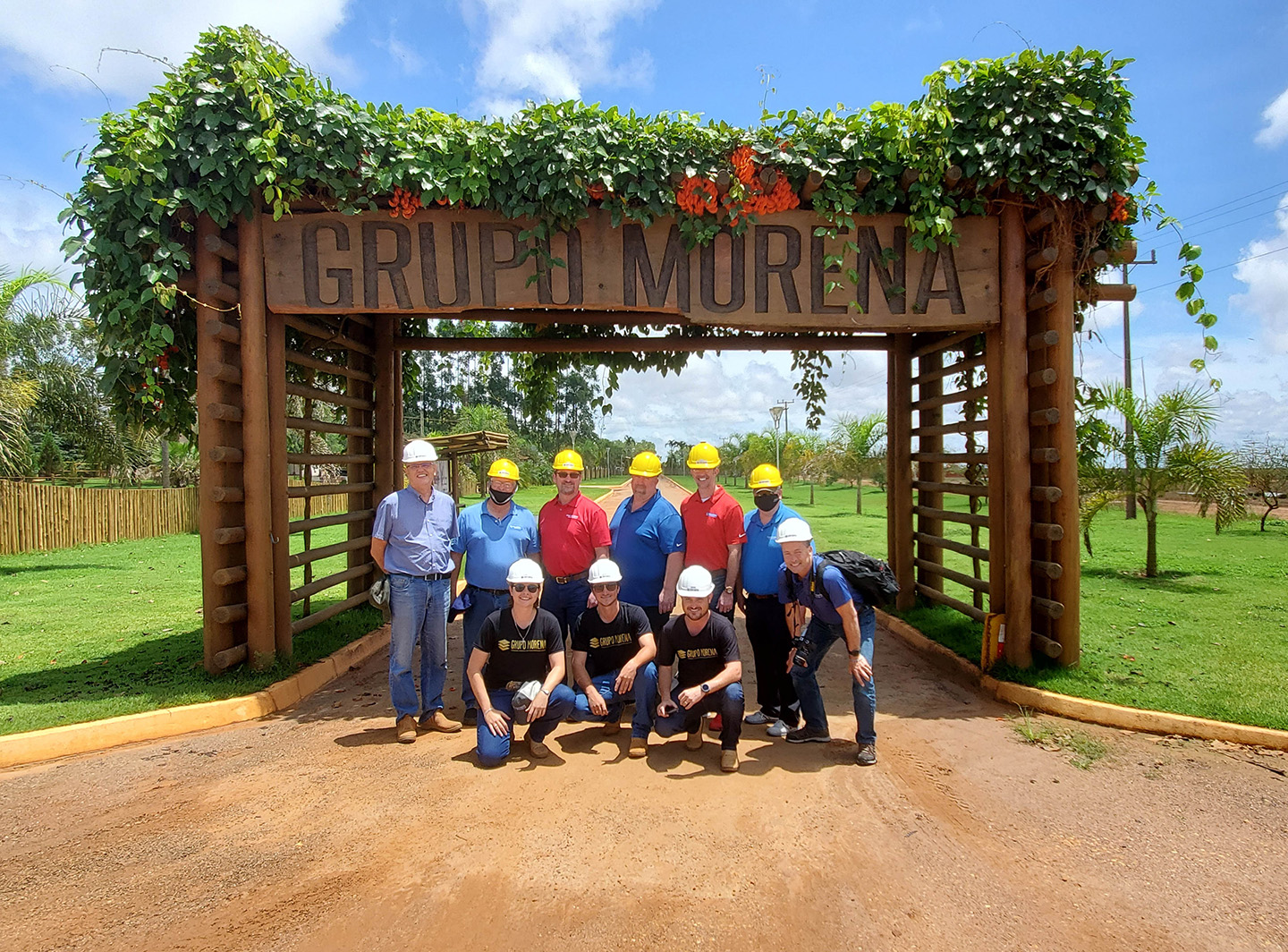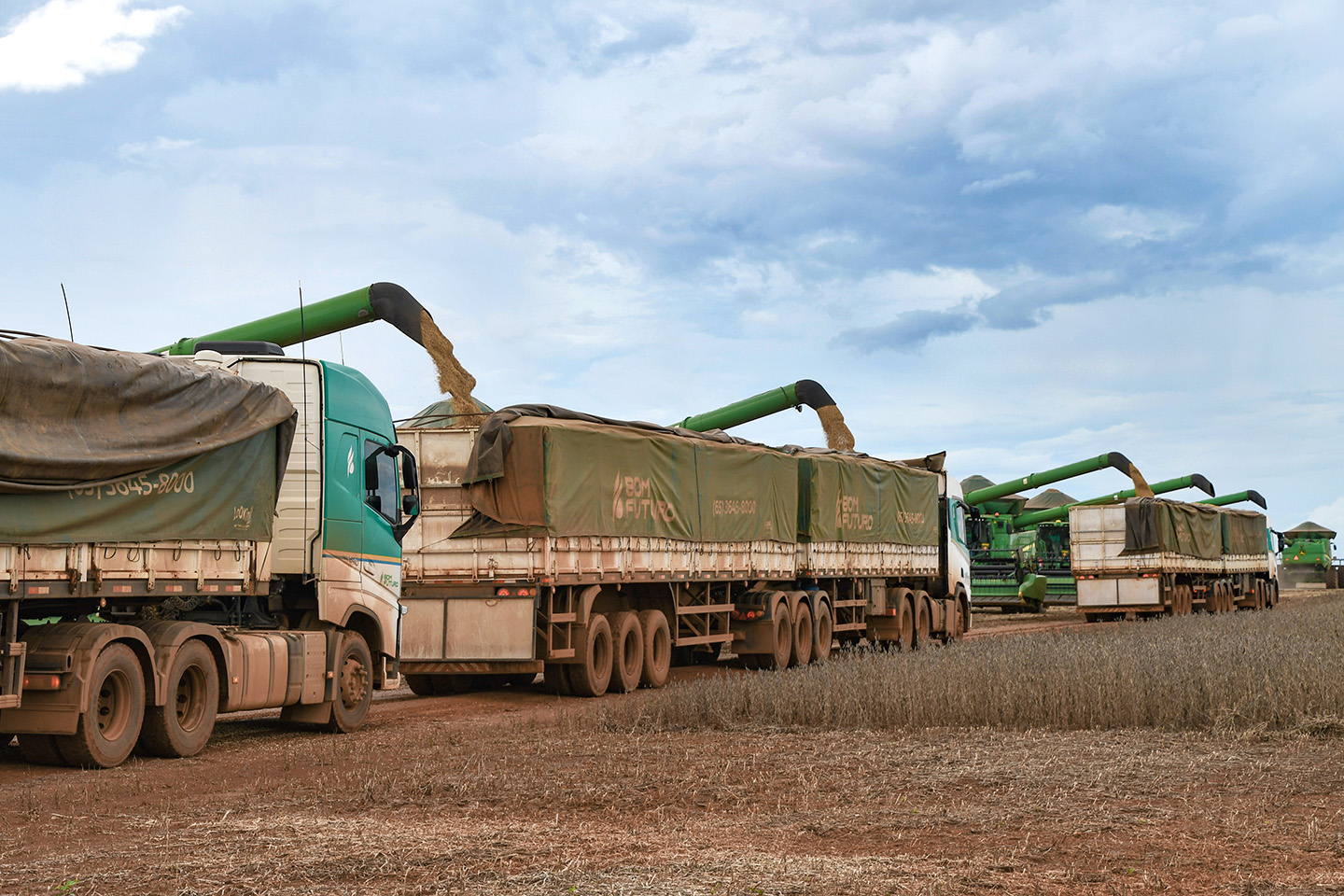
(Photo: Aaron Putze/Iowa Soybean Association)
Challenges facing Brazilian soybean farmers
March 14, 2022 | Aaron Putze, APR
The only gulf between the fortunes of Brazilian and U.S. soybean farmers is of the geographical variety.
Supply chain squeezes, rising input costs, competition for land, logistical challenges and disease pressures are challenges for Iowa and U.S. oilseed producers.
They also adversely affect the present and future aspirations of soybean producers in Mato Grosso, the most prolific soybean-producing region on the planet.
“The challenges are the same, but perhaps on different scales and priority,” says Ricardo Silva, a farmer from the Brazilian state responsible for nearly one-third of the country’s 2021-22 soybean output.
“Competition and challenges don’t always come from farmers in other countries but next to you in the country in which you live and farm.”
Silva, who just completed his 35th soybean harvest near Tangara, hosted several Iowa Soybean Association (ISA) farmer directors and staff for a fact-finding journey into the heart of Brazilian farm country in early February. It included conversations with soybean, cotton, corn and sugarcane farmers, processors, equipment suppliers and representatives of farmer-led associations.

No guarantees
Soybean production in Mato Grosso is projected to increase by nearly 65% over the next decade – from 1.4 billion bushels in 2020-21 to 2.2 billion bushels. The bullish outlook comes courtesy of the Federation of Agriculture of Mato Grosso State (FAMATO).
Much like the future of Iowa and U.S. soybean farmers, however, projected growth is far from guaranteed.
“We have aspirations, but challenges exist that will require much effort,” says Lucas Beber, vice president of Aprosoja, an organization representing the interests of Mato Grosso soybean and corn farmers. “There is optimism about the future, but uncertainty is always present, too.”
Beber’s sentiments were shared by several ag officials who met with the ISA delegation comprised of President Robb Ewoldt, District Directors Warren Bachman, Tim Bardole and Brent Swart, and CEO Kirk Leeds.
Drought in southern Brazil tempered early predictions of record oilseed output in Brazil. As soybean harvest winds down in the world’s largest soybean-producing country, no ag official would go on record with a final soy production total.
The consensus, however, was a crop totaling 4.5 – 4.7 billion bushels or 551 – 734 million bushels smaller than what had been forecast last December.
“The farmers in Brazil certainly have the capacity to grow large crops,” says Bachman. “But those forecasts can also go awry when the weather doesn’t cooperate, which we know all too well as Iowa farmers.”
U.S. commodities markets took notice throughout the delegation’s two-week visit, with cash soybean prices surging more than $1.50 per bushel the week of Feb. 7.
Input prices surge
Now all eyes turn to second-crop corn and cotton and the persistence of challenges that have impacted all oilseed producers since COVID-19 was declared a global pandemic in early 2020.
Chief among the challenges: surging input costs.
“Many farmers are delaying chemical purchases because prices are so high,” Beber says. “Still others can’t get the products they need, no matter what they’re willing to pay.”
Seed and chemical suppliers are delaying shipments to dealers or greatly reducing inventories available for sale as manufacturers struggle to overcome supply chain disruptions.
In Mato Grosso, a state that accounts for nearly one-third of Brazil’s total soybean output and 26% of acres planted to soybeans, machinery costs have more than doubled over the past year.
Tight supplies were easy to see during a visit to a John Deere dealership in Campo Novo, a quintessential farm town in west-central Mato Grosso. Its inventory was slim to none, consisting of one sprayer, a cotton picker and two corn heads. The number of tractors could be counted on less than one hand, and three were utility models.
“If weather isn’t good, grain, oilseed and cotton quality will suffer,” says Beber, who has made three visits to Iowa, including one to Iowa State University.

Pests, diseases emerge
Emerging pest and disease pressures also threaten a country that’s witnessed a meteoric rise in its ag output.
Cotton, planted in February immediately following soybean harvest, is sprayed more than 20 times during the growing season to outflank a myriad of threats to one of the country’s most valuable crops.
Crop disease and quality issues are also emerging, which are perplexing farmers and researchers. For example, farmers noticed an unusually high number of mature soybean plants collapsed in the field. Still, other soybeans were found molding in the field – even those still featuring green pods.
“No one knows why these things are happening,” Beber says. “So urgent studies are underway to determine the cause and possible treatment.”
Ag officials in Mato Grosso say the disease is appearing regardless of whether conditions are too wet and too dry. However, initial observations have found it to be more pervasive in certain soybean varieties, with yield losses as high as 15%. Soybean rust is also becoming more prevalent and severe.
Infrastructure struggles
Tangible progress on the quality of Brazil’s roads, bridges, railways and ports has been made. But the scale of what still needs to be accomplished dwarfs available resources.
For example, it can take a minimum of 48 days for soybeans leaving Mato Grosso to arrive in China via the Amazonas. By comparison, soybeans sourced from the U.S. Midwest and exported via the Pacific Northwest can arrive in Shanghai in just 28 days.
“It’s a major competitive advantage for U.S. farmers as more days means more cost,” says ISA CEO Kirk Leeds. “But no doubt, they are making progress.”
Leeds accompanied the group in Brazil. He also toured many of the same agricultural locations in 2014.
“There are more paved roads and more freight moving by rail,” he adds. “But just maintaining existing infrastructure – let alone building new – is always going to be a challenge in warm, tropical climates.”
Land use issues and growing concerns about conservation and sustainability practices of modern agriculture are also becoming more pronounced. Government policy is evolving as well. Nearly two decades ago, farmers were required to maintain at least 20% of Cerrato cultivated for row crop and pasture as legal preserves. Just two years ago, it increased to 35%.
“Farmers understand the need to protect and preserve, so we don’t fight these requirements,” Silva says. “In fact, most farms do more than that – perhaps as much as 38%.”
The real challenge, he says, comes from other farmers willing to pay top dollar for land rent or purchase. Established cotton farmers, bolstered by high returns, often hold the upper hand.
Start-up costs for cotton production are enormous. The commodity is also expensive to grow, a risk too great for many farmers. So, the large and wealthy producers have more options and purchasing power.
“Farming in Brazil is very rewarding, but very competitive, too,” Silva says. A sentiment shared by Iowa soybean farmers located 6,500 miles to the north.
“My perspective about agriculture in Brazil has forever changed because of this trip,” says Ewoldt, a farmer from Davenport and ISA president.
“You hear a lot of things from afar, like all kinds of deforestation taking place and unlimited production potential,” he adds. “Yet every day, just like us, they face challenges and struggles.
“We have a lot in common as we work together – albeit on different continents – to feed and fuel the world.”
Back